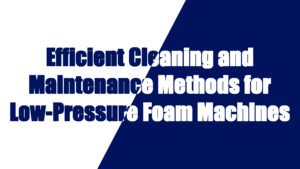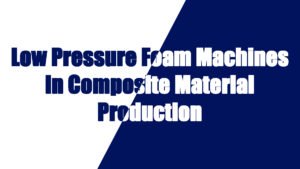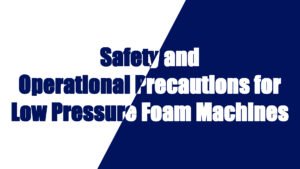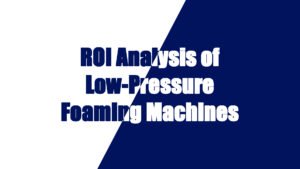In the toy industry, materials used must be safe, durable, flexible, and cost-effective, while also meeting stringent safety standards. Polyurethane (PU) is widely used in the manufacturing of toys due to its versatility, safety features, and ability to be molded into complex shapes. However, it competes with other materials such as PVC (Polyvinyl Chloride), Rubber, EVA (Ethylene-Vinyl Acetate), ABS (Acrylonitrile Butadiene Styrene), Und Holz. Each material has its advantages and disadvantages depending on the intended use, such as soft toys, action figures, educational toys, or building blocks.
Materials Comparison Table:
| Property | Polyurethan (PU) | PVC (Polyvinyl Chloride) | Rubber | EVA (Ethylene-Vinyl Acetate) | ABS (Acrylonitrile Butadiene Styrene) | Holz |
|---|---|---|---|---|---|---|
| Density (g/cm³) | 1.1 – 1.3 | 1.3 – 1.4 | 1.1 – 1.4 | 0.92 – 1.0 | 1.04 – 1.1 | 0.5 – 0.9 |
| Tensile Strength (MPa) | 30 – 60 | 30 – 60 | 10 – 30 | 10 – 30 | 40 – 60 | 40 – 100 |
| Elongation at Break (%) | 300 – 800% | 150 – 400% | 100 – 400% | 100 – 400% | 5 – 10% | 10 – 20% |
| Hardness (Shore A) | 60 – 95 | 60 – 85 | 40 – 70 | 40 – 80 | 80 – 95 | 30 – 80 |
| Abrasion Resistance | Hoch | Moderate to high | Excellent | Good | Hoch | Niedrig |
| Impact Resistance | Hoch | Moderate | Hoch | Moderate | Hoch | Moderate |
| Water Resistance | Excellent | Poor | Good | Excellent | Poor | Moderate to high |
| Chemical Resistance | Good, resistant to oils, solvents | Moderate to good | Niedrig | Moderate to good | Hoch | Niedrig |
| Flexibility | Hoch | Moderate | Hoch | Hoch | Moderate | Niedrig |
| Temperature Resistance | -40°C to 80°C | -10°C to 60°C | -40°C to 120°C | -30°C to 80°C | -20°C to 100°C | -20°C to 80°C |
| Shock Absorption | Excellent, soft and cushioned | Moderate | Excellent | Good | Moderate | Niedrig |
| Recyclability | Niedrig | Moderate (limited) | Hoch | Hoch | Hoch | Hoch |
| Cost | Moderate to high | Low to moderate | Niedrig | Low to moderate | Moderate to high | Moderate to high |
| Applications in Toys | Soft toys, foam toys, squishy toys | Figurines, inflatable toys, teething toys | Rubber toys, bouncy balls | Foam toys, soft educational toys | Action figures, toy vehicles | Educational toys, puzzles, building blocks |
Detailed Analysis:
1. Polyurethane (PU):
- Vorteile:
- Versatility: PU can be molded into a wide range of shapes and textures, making it ideal for soft toys, squishy toys, and other novelty items in the toy industry. It can also be used for foam-based toys like spongy balls oder foam blocks.
- Flexibility: PU offers high flexibility, enabling it to be used in toys that require bending or molding, such as interactive plush toys oder stuffed animal shapes.
- Impact Resistance: PU’s high impact resistance makes it suitable for toys that undergo rough play and handling, providing durability and safety.
- Safety: PU is typically non-toxic, which is a major advantage in toys for children. It can also meet international safety standards for children’s toys.
- Shock Absorption: PU’s shock-absorbing properties make it suitable for squishy toys oder soft balls that require gentle, non-harmful impact.
- Disadvantages:
- Cost: PU is generally more expensive than materials like PVC or rubber, which can increase the overall cost of producing certain types of toys.
- Recyclability: Polyurethane is difficult to recycle compared to materials like EVA or rubber, which raises environmental concerns.
2. PVC (Polyvinyl Chloride):
Vorteile:
- Haltbarkeit: PVC is highly durable and resistant to wear, making it ideal for figures Und molded toys that need to withstand frequent handling.
- Cost-Effective: PVC is inexpensive, making it a popular choice for low-cost toys, such as inflatable toys oder plastic figures.
- Moldability: PVC can be molded into complex shapes and designs, making it suitable for action figures, dolls, Und miniatures.
- Water Resistance: PVC is waterproof, which makes it useful in toys that are intended for outdoor play or those that will be submerged in water (e.g., bath toys).
Disadvantages:
- Environmental Concerns: PVC is not biodegradable, and its production involves harmful chemicals. Additionally, recycling options for PVC are limited.
- Flexibility: While PVC can be made flexible, it is generally more rigid compared to PU, which limits its use in soft toys or plush toys.
- Chemical Sensitivity: PVC can be sensitive to certain chemicals and may degrade if exposed to oils or other harsh substances.
3. Rubber:
Vorteile:
- Haltbarkeit: Rubber is highly durable and can withstand wear and tear, making it ideal for toys like bouncy balls, rubber dolls, Und teething toys.
- Elasticity: Rubber is elastic and can be stretched, making it suitable for toys that need to be squeezed, bounced, or stretched.
- Shock Absorption: Excellent shock absorption properties make rubber ideal for toys that are subjected to heavy impacts, such as bouncy toys oder play balls.
Disadvantages:
- Toxicity: Some types of rubber, especially in their untreated form, may contain chemicals that are unsafe for children, especially in toys that are put in the mouth.
- Umweltauswirkungen: Rubber can be difficult to recycle and can lead to long-term environmental waste issues.
- Limited Design Flexibility: Rubber is less moldable and flexible than materials like PU, limiting its design capabilities.
4. EVA (Ethylene-Vinyl Acetate):
Vorteile:
- Lightweight and Soft: EVA is soft and lightweight, making it suitable for Schaumstoffspielzeug, soft building blocks, Und cushioned play mats. It’s a popular choice for educational toys Und playroom mats.
- Shock Absorption: EVA offers good shock absorption, providing comfort for children during play, making it suitable for toys that involve bouncing or stacking.
- Non-Toxic: EVA is generally non-toxic and is often used in toys that are intended for babies or young children.
Disadvantages:
- Limited Durability: EVA is not as durable as materials like rubber or ABS, making it less suitable for toys that undergo rough handling.
- Chemical Resistance: EVA is not as chemically resistant as some other materials, and can degrade in harsh chemical environments.
- Recyclability: Although more recyclable than PU, EVA recycling options are still limited compared to rubber or wood.
5. ABS (Acrylonitrile Butadiene Styrene):
Vorteile:
- Strength and Durability: ABS is a strong and durable thermoplastic, making it ideal for creating action figures, vehicles, building blocks, Und toy parts that require high durability and impact resistance.
- Impact Resistance: ABS has excellent impact resistance, making it ideal for toys that undergo rough handling or need to withstand drops or impacts.
- Moldability: ABS can be easily molded into detailed shapes, which is why it is often used for toys with intricate designs, such as Lego blocks oder action figures.
Disadvantages:
- Toxicity Concerns: ABS can release toxic fumes when burned or subjected to high temperatures, so it must be handled carefully during production and disposal.
- Hardness
: ABS can be too rigid and hard for certain types of soft toys, and does not offer the cushioning that materials like EVA or PU provide.
6. Wood:
- Vorteile:
- Natural and Eco-Friendly: Wood is a renewable material and offers an environmentally friendly option for sustainable toy production. It is often used for educational toys, building blocks, Und puzzles.
- Haltbarkeit: Wood is strong and durable, and when treated properly, it can last for generations. Wooden toys are often cherished heirlooms.
- Disadvantages:
- Gewicht: Wood is heavier than most synthetic materials, making it less ideal for soft or lightweight toys.
- Limited Flexibility: Wood lacks the flexibility and softness needed for toys that require squishiness or softness, such as plush toys oder rubber balls.
- Cost: Wood can be more expensive to source and process compared to synthetic materials like PVC or EVA.
Summary:
Polyurethan (PU)
- Pros: Highly versatile, flexible, Und impact-resistant. Suitable for a wide range of toys including soft toys, Schaumstoffspielzeug, Und squishy items. Excellent shock absorption Und non-toxic.
- Cons: Higher cost Und difficult recyclability.
aus PVC
- Pros: Cost-effective, durable, Und waterproof. Ideal for plastic figures, inflatable toys, Und bath toys. Good moldability.
- Cons: Environmental concerns, less flexibility, Und lower shock absorption.
Rubber
- Pros: Elastic, shock-absorbing, Und durable. Ideal for bouncy balls, teething toys, Und rubber dolls.
- Cons: Toxicity concerns Und difficult recyclability.
EVA
- Pros: Lightweight, soft, Und shock-absorbing, ideal for Schaumstoffspielzeug Und play mats. Non-toxic and safe for young children.
- Cons: Limited durability Und chemical resistance.
ABS
- Pros: Dauerhaft, impact-resistant, Und moldable. Ideal for action figures, building blocks, Und vehicles.
- Cons: Hard Und non-breathable, with toxicity concerns in certain production methods.
Holz
- Pros: Eco-friendly, durable, Und natural. Ideal for educational toys, puzzles, Und building blocks.
- Cons: Heavy, limited flexibility, and higher cost.
Conclusion:
- Polyurethan offers a versatile, durable, Und safe option for a wide variety of toys, particularly soft Und shock-absorbing toys, though it comes at a higher cost.
- aus PVC is best for molded toys Und inflatable items, with good durability Und cost-effectiveness, but has environmental drawbacks.
- Rubber excels in elasticity Und impact resistance, suitable for bouncy toys Und teething products, but toxic concerns limit its usage in some markets.
- EVA is ideal for lightweight, safe, Und soft toys, though it may lack long-term durability.
- ABS is perfect for high-impact toys requiring durability Und intricate designs, while wood offers a natural, eco-friendly option for traditional, educational toys.
Overall, Polyurethan stands out for its flexibility, impact resistance, Und safety features, making it ideal for a broad range of toy applications, especially those requiring soft, flexible, and durable designs.



































